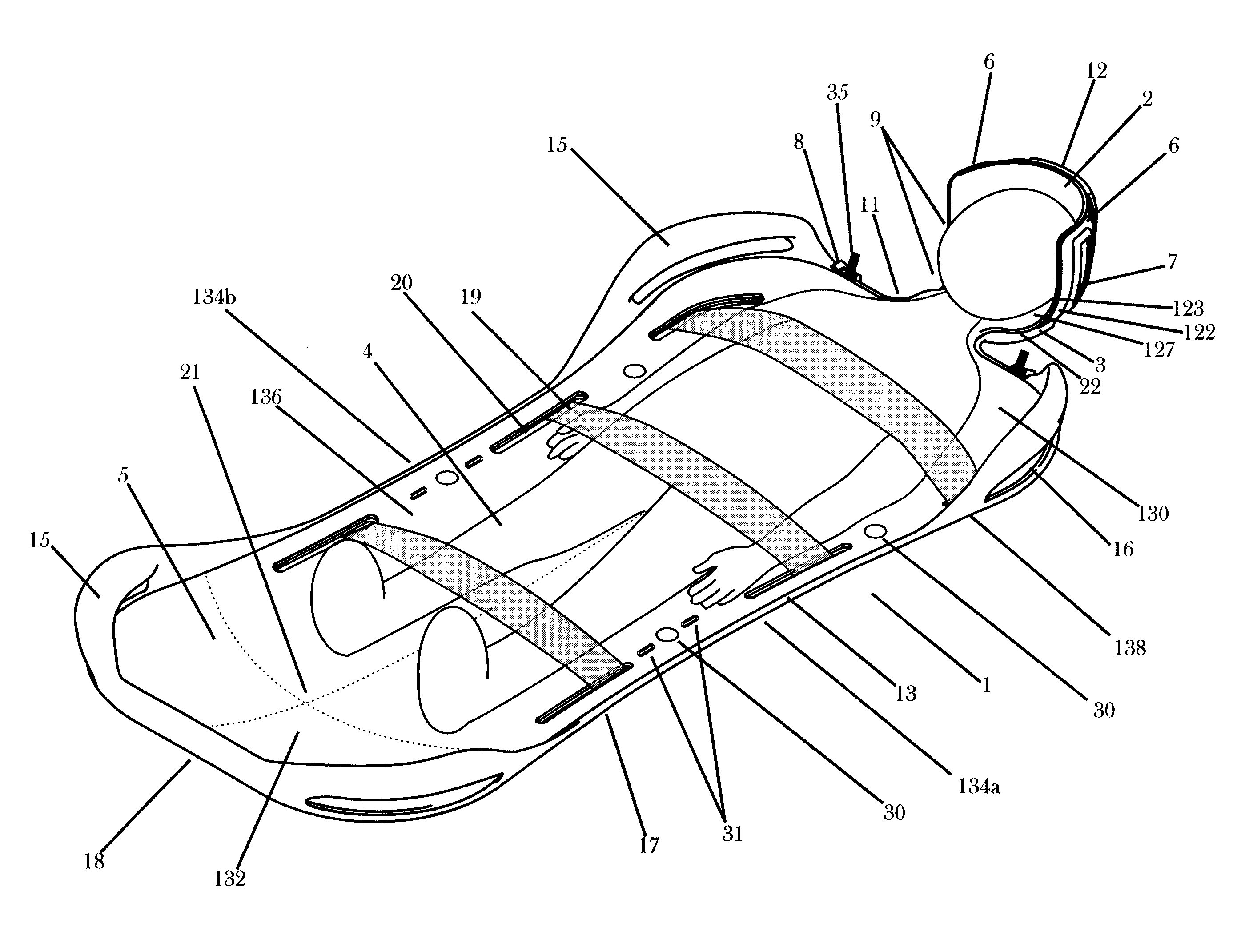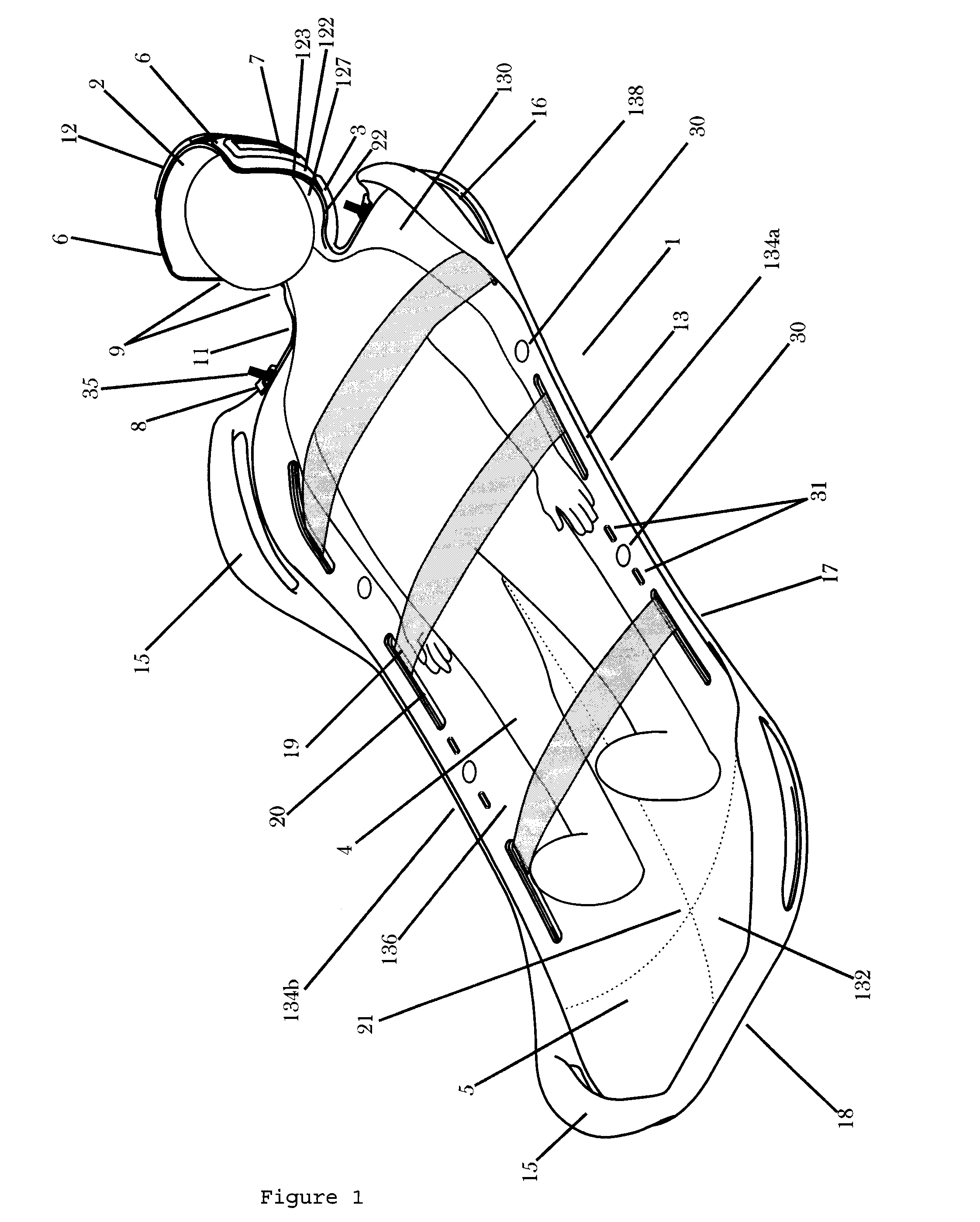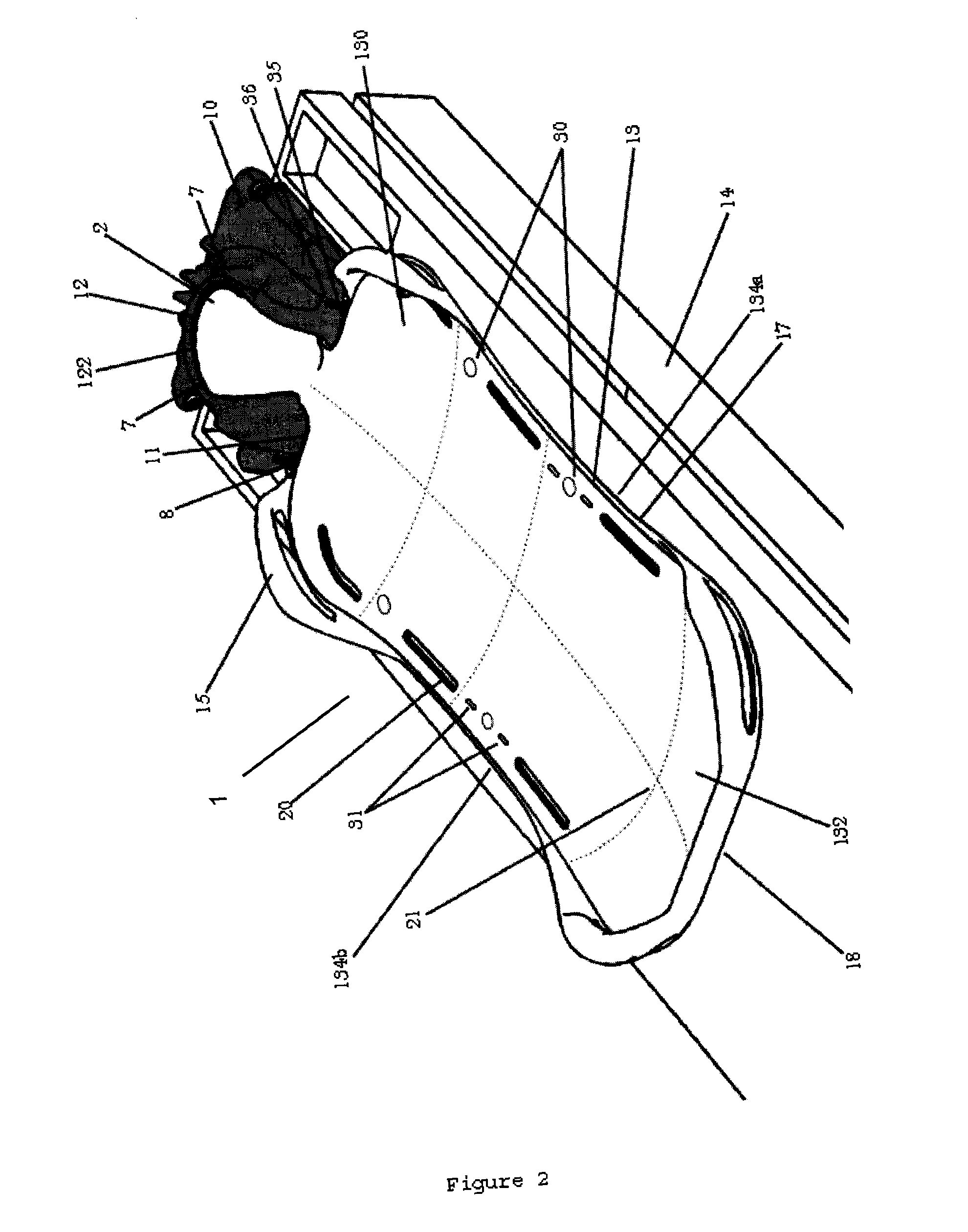Subject placement and head positioning device
a head positioning and subject technology, applied in the field of patient placement, can solve the problems of poor image quality in comparison to coils that are in close proximity to the voi, reduce the sensitivity of the process, so as to reduce the stress on the wrist, reduce the lifting angle of the board, and facilitate the effect of tilting and sliding
- Summary
- Abstract
- Description
- Claims
- Application Information
AI Technical Summary
Benefits of technology
Problems solved by technology
Method used
Image
Examples
Embodiment Construction
[0091]In this specification and in the claims that follow, reference will be made to a number of terms that shall be defined to have the meanings below. All numerical designations, e.g., dimensions and weight, including ranges, are approximations that typically may be varied (+) or (−) by increments of 0.1, 1.0, or 10.0, as appropriate. All numerical designations may be understood as preceded by the term “about”.
[0092]The singular form “a”, “an”, and “the” includes plural references unless the context clearly dictates otherwise.
[0093]The term “comprising” means any recited elements are necessarily included and other elements may optionally be included. “Consisting essentially of” means any recited elements are necessarily included, elements that would materially affect the basic and novel characteristics of the listed elements are excluded, and other elements may optionally be included. “Consisting of” means that all elements other than those listed are excluded. Embodiments defined...
PUM
 Login to View More
Login to View More Abstract
Description
Claims
Application Information
 Login to View More
Login to View More - R&D
- Intellectual Property
- Life Sciences
- Materials
- Tech Scout
- Unparalleled Data Quality
- Higher Quality Content
- 60% Fewer Hallucinations
Browse by: Latest US Patents, China's latest patents, Technical Efficacy Thesaurus, Application Domain, Technology Topic, Popular Technical Reports.
© 2025 PatSnap. All rights reserved.Legal|Privacy policy|Modern Slavery Act Transparency Statement|Sitemap|About US| Contact US: help@patsnap.com



